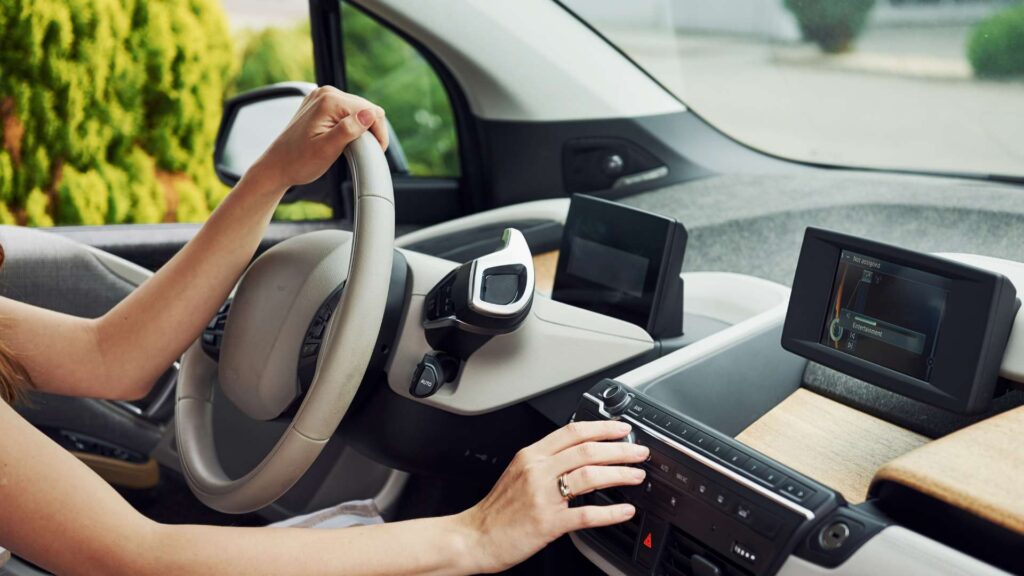Table of Contents
Smart devices have gone from being “nice-to-have” extras to essential tools that shape how we live and manage risks. One area where this evolution is most visible is car insurance. The rise of bundled smart devices—from dashcams and telematics apps to home security systems linked with car coverage—has changed how insurers price risk, process claims, and interact with drivers’ policies.
For consumers, this shift brings new opportunities for savings and convenience but also raises questions about privacy and fairness. In this blog, we’ll explore how bundled smart devices affect car insurance in 2025, their benefits and risks, how insurers and regulators are adapting, and steps you can take as a driver to utilise this connected ecosystem.
What Do We Mean by “Bundled Smart Devices”?
Definition and Evolution
Bundled smart devices include integrating multiple connected tools—often spanning cars, homes, and personal devices—into insurance policies. Insurers now evaluate real-time data pulled from your devices rather than relying solely on your driving record or ZIP code. This data provides a much more precise picture of your risk profile.
The evolution has been rapid. In the early 2010s, usage-based insurance (UBI) programs used small plug-in devices that tracked mileage. By 2020, mobile apps and vehicle telematics had become common. Fast-forward to 2025, and we now see fully connected ecosystems where your car, your home, and sometimes even your health devices contribute to your insurance profile.
Types of Smart Devices Used in Auto Insurance
The most common smart devices tied to auto insurance include:
- Dashcams: Recording road incidents, offering clear evidence in case of accidents.
- Telematics apps: Tracking speed, braking, phone usage, and driving times.
- OBD-II plug-in devices: Monitoring vehicle health and driver behavior.
- Connected car platforms: Built-in systems from automakers, like Tesla or GM OnStar, that transmit driving data.
- Smart home devices: Security systems or smoke detectors bundled with auto policies.
- Wearables: Fitness trackers and mobile apps that encourage safe habits, sometimes indirectly tied to wellness incentives in bundled policies.
Why Insurers Embrace Bundled Devices
For insurers, bundled smart devices offer multiple advantages:
- Accurate risk assessment: Real-time data is far more reliable than generalized assumptions.
- Fraud prevention: Dashcams and connected devices help verify accident claims, reducing fraud.
- Customer engagement: Bundled ecosystems encourage long-term relationships between insurers and policyholders.
In short, bundled devices aren’t just about monitoring but about creating a smarter insurance marketplace.
The Rise of Telematics and Connected Ecosystems in 2025
From Usage-Based to Behavior-Based Insurance
Insurers initially used telematics to track mileage—drivers who drove less often got cheaper rates. These systems have evolved into behavior-based insurance models. Today, insurers monitor how you drive, not just how much. Hard braking, rapid acceleration, frequent night driving, and distracted phone use factor into premiums.
Smart Homes + Cars Bundles
Another major shift is the integration of home and auto coverage. For example, if you install a smart home security system and bundle it with your auto insurance, you may qualify for significant discounts. Insurers see households with car and home monitoring systems as lower risk overall. This ecosystem encourages consumers to adopt more smart tech while rewarding them financially.
Integration with AI Wallets and Digital Insurance Platforms
In 2025, insurers will increasingly partner with digital wallets and AI-powered platforms. These platforms automate premium payments, adjust rates in real-time, and even streamline claims. For example, if your dashcam detects an accident, your insurer may initiate a claim automatically, sending you updates through your mobile wallet. The result is faster service, fewer headaches, and a more personalized insurance experience.
Benefits of Bundled Smart Devices for Policyholders
Lower Premiums Through Data-Backed Discounts
Perhaps the biggest draw for drivers is cost savings. With accurate data, insurers can reward good driving directly. 30–40% discount is common for drivers who consistently demonstrate safe habits, such as avoiding hard braking or keeping mileage low.
These savings are especially beneficial for younger drivers, who traditionally face higher premiums. Telematics allows them to prove their responsibility behind the wheel and access fairer rates.
Enhanced Safety and Security
Smart devices do more than save money—they save lives. Real-time crash detection can alert emergency services immediately, reducing response times. Anti-theft GPS trackers and dashcams deter criminals and help recover stolen vehicles.
This level of protection provides peace of mind for drivers and their families. In fact, some insurers now require dashcams for certain high-risk policies, not just for discounts but as a baseline safety measure.
Personalized Coverage Options
Gone are the days of one-size-fits-all policies. With data from smart devices, insurers can tailor coverage to match actual usage and needs. For example, a driver rarely taking long trips may benefit from pay-per-mile coverage, while a daily commuter may prefer broader comprehensive protection. Personalized policies ensure you pay for the coverage you need, not subsidizing riskier drivers in your pool.
Streamlined Claims Processing
Filing a claim used to be tedious. In 2025, dashcams, telematics, and digital platforms streamline the process. Video evidence from your dashcam can quickly prove fault, and connected devices automatically upload data to insurers. Many claims that took weeks to resolve are now approved in days—or even hours.
Risks and Concerns With Bundled Smart Devices
Privacy and Data Sharing
One of the biggest concerns consumers face is privacy. Smart devices collect massive amounts of data: where you drive, how fast, at what times, and sometimes even your location at all times. Insurers promise to use this data responsibly, but questions about who owns it and how it’s shared remain pressing in 2025.
Potential for Premium Increases
While safe drivers save money, risky drivers may see their premiums rise. Your insurer might charge more if telematics reveals frequent speeding or distracted driving. Bundled devices make premiums more dynamic—great for some, but stressful for others.
Tech Reliability Issues
Technology isn’t perfect. Devices may malfunction, provide inaccurate readings, or lose connectivity. A faulty telematics device that mistakenly records harsh braking could unfairly impact your rates. Consumers must stay vigilant and challenge inaccurate data.
Digital Divide and Accessibility
Not everyone is comfortable with technology. Older drivers or those without access to modern smartphones may struggle with telematics programs. This can create a divide where tech-savvy drivers get discounts, while others are left behind, even if their driving is equally safe.
How Smart Device Bundling Affects Insurers in 2025
Improved Risk Management
For insurers, smart devices are a goldmine of risk data. Instead of relying solely on averages—like age, gender, or location—they can evaluate individuals more fairly. This improves profitability by aligning premiums with actual risk, reducing unexpected losses.

Market Competition and Innovation
The rise of bundling has intensified competition. Insurers now compete not only on price but also on tech-friendly features. Some offer free dashcams or discounts on smart home devices to attract customers. Others partner with automakers to integrate data directly from connected cars.
Partnerships with Tech Companies
Insurers increasingly collaborate with tech companies, from car manufacturers to home security providers. These partnerships allow insurers to expand their bundled ecosystems and keep consumers engaged. For example, a driver who buys a new EV might receive both a charging station and a smart telematics discount package.
State Regulations and Consumer Protections
State-by-State Variations in Telematics Rules
In the US, each state regulates insurance differently. Some states allow insurers to use all telematics data, while others restrict certain types. For example, a state may permit mileage tracking but prohibit insurers from using location data to determine premiums.
Consumer Rights Over Data Ownership
By 2025, consumer advocacy has pushed insurers to adopt clearer rules around data ownership. Many policies now include opt-in clauses allowing drivers to control how their data is shared. Drivers should review these carefully to avoid surprises.
Future Legal Trends
Looking ahead, legal frameworks will likely continue to evolve. Expect stricter data privacy laws and regulations requiring insurers to disclose exactly how device data impacts pricing. These protections will aim to balance innovation with consumer rights.
Preparing as a Consumer in 2025
Evaluate Your Comfort With Data Sharing
Before signing up for a telematics-based policy, ask yourself how much data you’re comfortable sharing. Some drivers prioritize privacy over potential discounts, while others are happy to trade data for savings. Understanding your boundaries is key.
Ask Insurers the Right Questions
Don’t just accept a smart device program at face value. Ask your insurer:
- What data is collected?
- How long is it stored?
- Can it be used to deny claims?
- What happens if the device malfunctions?
Getting clear answers ensures you know what you’re agreeing to.
Shop for Bundles Strategically
Bundled smart device programs vary widely. Compare insurers to see which offers the best value. Some bundle car insurance with smart home monitoring, while others include wellness incentives tied to fitness apps. Pick the bundle that fits your lifestyle.
Use Digital Tools to Track Driving Behavior
Many telematics apps provide feedback directly to drivers, showing where they can improve. Use these tools not just to earn discounts but to become a safer, more mindful driver. Over time, these habits benefit both your wallet and your safety.
Conclusion
Bundled smart devices have transformed car insurance in 2025. What once relied on rough averages now reflects real-time behavior, creating opportunities for fairer pricing, safer driving, and faster claims. For consumers, the benefits include lower premiums, enhanced safety, and a more personalized experience.
Of course, this shift isn’t without challenges. Privacy, data accuracy, and accessibility remain concerns. As regulations catch up and insurers refine their offerings, the balance between innovation and protection will continue to improve. You can make informed decisions with tools like Beem, which let you compare and personalize car insurance. Download the app here.
FAQs for How Bundled Smart Devices Affect Car Insurance in 2025
Do I have to install smart devices to get car insurance in 2025?
No, most insurers still offer traditional policies. However, the best discounts and personalized coverage often require participation in telematics or smart device programs.
How much can I save with telematics-based discounts?
Savings vary, but safe drivers often cut premiums by 30–40%. Discounts are higher for young drivers, who traditionally pay more.
What happens if my smart device fails or malfunctions?
If a device malfunctions, contact your insurer immediately. Most insurers allow drivers to contest inaccurate data and will provide replacement devices.
Will insurers raise my rates if I drive poorly with a telematics device?
Yes, in many cases. While some programs only offer discounts, others use behavior data to adjust premiums both up and down. Risky driving can lead to higher costs.
Are smart home devices really connected to car insurance policies?
Many insurers offer bundles that connect smart home devices—like security systems or fire alarms—with car insurance policies. These bundles can create multi-policy discounts.














































